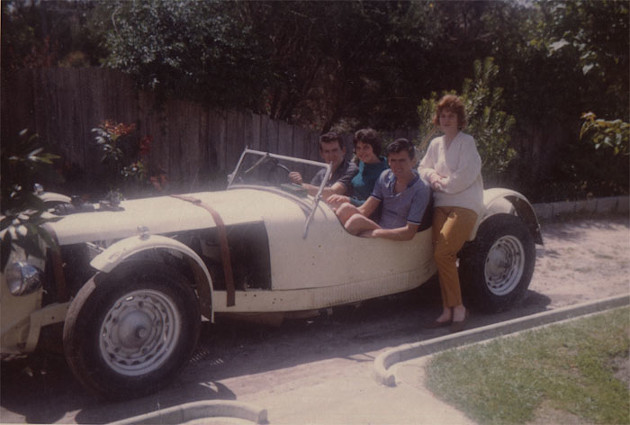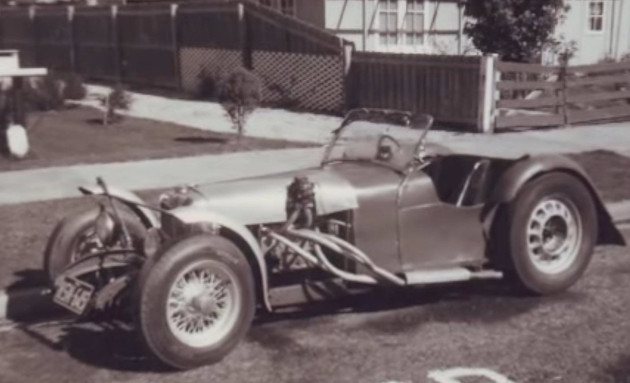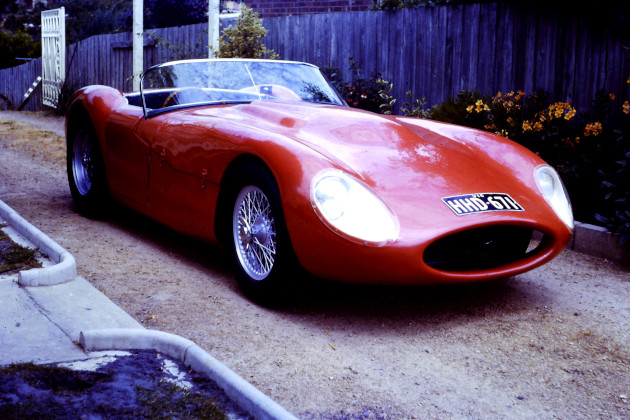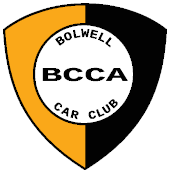Specials (Mk.1, Mk.2 and Mk.3)

Campbell Bolwell’s introduction to building sports cars began in the late 1950s at the ripe old age of 16, when his younger brother Graeme and Graeme’s school mate Linley Hughes wagged school and borrowed Campbell’s pride and joy, a 1937 Ford V8 sedan, and took it for a spin. The end result was that nearly every single panel on Campbell’s hard earned £50 motor vehicle investment was destroyed.
Once over his initial dismay, Campbell set about using this opportunity to build a sports car that would be the pride of the neighborhood. The body panels disappeared out in the bush somewhere and the rebuilding began. The body was replaced with a light tubular frame and metal covering to save weight. The original three speed gearbox was replaced with a four speed, indestructible truck gearbox; bucket seats from a Singer were fitted; and a universal joint was incorporated into the steering column to lower the driver’s seating position. And so the first Bolwell two seater sports car, now known as the Bolwell Mk1, was born. Campbell claimed his car would do 0 to 50 mph in about 8 seconds, which was about Austin Healey time in those days. Importantly for a teenager, the car was a great “chick magnet”.

Pleased with his success on Bolwell Mk1, it was sold off and work began on Bolwell Mk2, which was to incorporate Campbell’s own sports car design theories. Campbell was a huge fan of Colin Chapman and Lotus cars, and was keen to put Chapman’s principals of light-weight construction; weight distribution and traction into practice for himself.
The Bolwell Mk2 was based on an MG J2 chassis and a side-valve Ford 10 engine and gearbox that Campbell moved right back so the driver was sitting almost between the back wheels. It had an MG radiator that was moved down and back so that it was actually behind the front axle. Suspension was standard MG but with the friction dampers taken off. It had 19 inch wheels at the back and cut down wire wheels about 13 or 14 inches on the front. The back wheels were disks and the car was instantly recognisable where-ever it went. The seats were bucket seats formed out of aluminium with a cushion on, and it had other parts from just about everything, including a Volkswagen horn.
The Bolwell Mk2 definitely went better than the Ford. Campbell Bolwell recalls that it was exhilarating to drive because you were totally windblown, and petrol covered because it spat fuel everywhere – there was never an air cleaner on it. It weighed in at about 1,000 pounds (450 kilograms) and could accelerate at the same rate as the V8 car but with only a fraction of the horsepower. It was faster off the line with practically no wheel-spin, and it was much quicker through corners. Up to about 40 mph it was just like a little rocket ship, but then it would run out of puff. Campbell later sold the Mk2 to his brother Graeme’s friend, Linley Hughes.

While Campbell Bolwell was putting his mechanical theories and construction skills to the test, brothers Graeme and Winston had become interested in the use of fibreglass as a suitable medium for creating lightweight bodies for sports cars. The car that is now most commonly referred to as the Bolwell Mk3 belonged to younger brother Graeme. The Bolwell Mk3 started life as a Jag/Healey special originally built by Graeme’s dentist.
It featured a new Austin-Healey chassis with Austin-Healey front suspension, rear axle, wire wheels, and had Dunlop SP racing tyres on it. It came with a hotted up Jaguar Mark VII engine and gearbox that had D type valves, cams and other go faster gear, and it performed very nicely. It would do a standing quarter mile in 13.9 seconds at 102 mph. By comparison, Linley Hughes claimed that in Campbell’s MG special he could beat Graeme off the line but would soon run out of puff and only manage 19 seconds, which was still pretty quick.
The original fibreglass body was a bit heavy and was generally considered to be “ugly”. Graeme didn’t like it so eventually he put a body of his own design on it. This was to be the first fibreglass body built by Bolwell. There was a centre bulkhead made out of tubular steel and covering that in aluminium. The doors were made out of steel but fibreglass was used for the bonnet and back panels. Graeme utilised the rear window from an FE Holden as his windscreen. Graeme’s Bolwell Mk3 was eventually put up for sale in December 1963 and subsequently became known as “The Elgaram”.
Not to be outdone by his younger brothers, Winston, who had an Austin-Healey 100/4, pulled the four cylinder engine out of it and put in a six cylinder Jaguar engine. Somewhat confusingly, this car is now often referred to as the Bolwell Mk3A, with Graeme’s car being the Mk3B. Winston modified the front bulkhead and built a fibreglass front which made the car look a bit like a Ferrari or E-Type. He also hand-made an aluminium egg crate grill, a hard top, and a large flip-top petrol cap for the back shroud. As a young married man and father of two young children, Winston eventually arranged to swap his special with his good friend Paul Morton for a Mini 850, believing the Mini to be a bit more sensible for a family man than the Jag/Healey.
In June 1962 a small sign appeared next to the letter box at the Bolwell family home in Frankston. It read simply, ‘Bolwell Cars’. Campbell Bolwell, aged twenty, was open for business; and fulfilling his dream to design and build sports cars. For the next six months he kept his job at Coles while saving money furiously and planning the ultimate sports car. Finally, in December 1962, Campbell sacked his boss and with start up working capital of ₤200, went out fully on his own as a sports car manufacturer.
 Bolwell Car Club of Australia
Bolwell Car Club of Australia